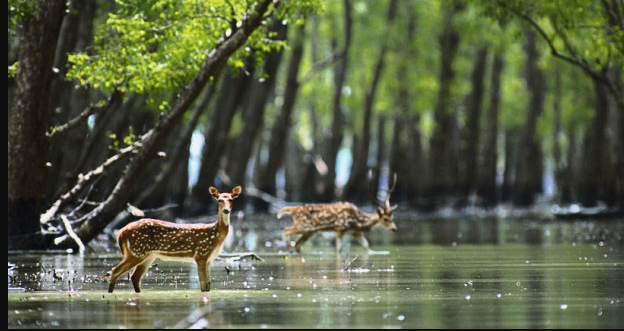Sundarbans: Wonder of the World

The Sundarbans mangrove forest, one of the largest such forests in the world (140,000 ha), lies on the delta of the Ganges, Brahmaputra and Meghna rivers on the Bay of Bengal. It is adjacent to the border of India’s Sundarbans World Heritage site inscribed in 1987. The site is intersected by a complex network of tidal waterways, mudflats and small islands of salt-tolerant mangrove forests, and presents an excellent example of ongoing ecological processes. The area is known for its wide range of fauna, including 260 bird species, the Bengal tiger and other threatened species such as the estuarine crocodile and the Indian python.

The largest mangrove forest in the world is a mist-shrouded, river-riddled swamp region of shifting tides, man-eating tigers and off-the-beaten-track adventure. It's surrounded on three sides by two of the most densely populated countries on earth – India and Bangladesh – yet it remains remote, inhospitable and largely uninhabited by people. This is truly wild terrain, and chug-chugging along its river channels into its swampy heart of darkness is as thrilling as it is serene.

The star attraction is the Royal Bengal tiger. Around 400 of these magnificent creatures call the Sundarbans home, making this the largest single population of tigers on earth. Despite their reputation as man-eaters, they are extremely difficult to spot, but the thrill of trying to track one down is hard to overstate. And even if you see none, simply sitting on the deck of your boat as you float through thick mangrove forests is an unforgettably dreamy experience.